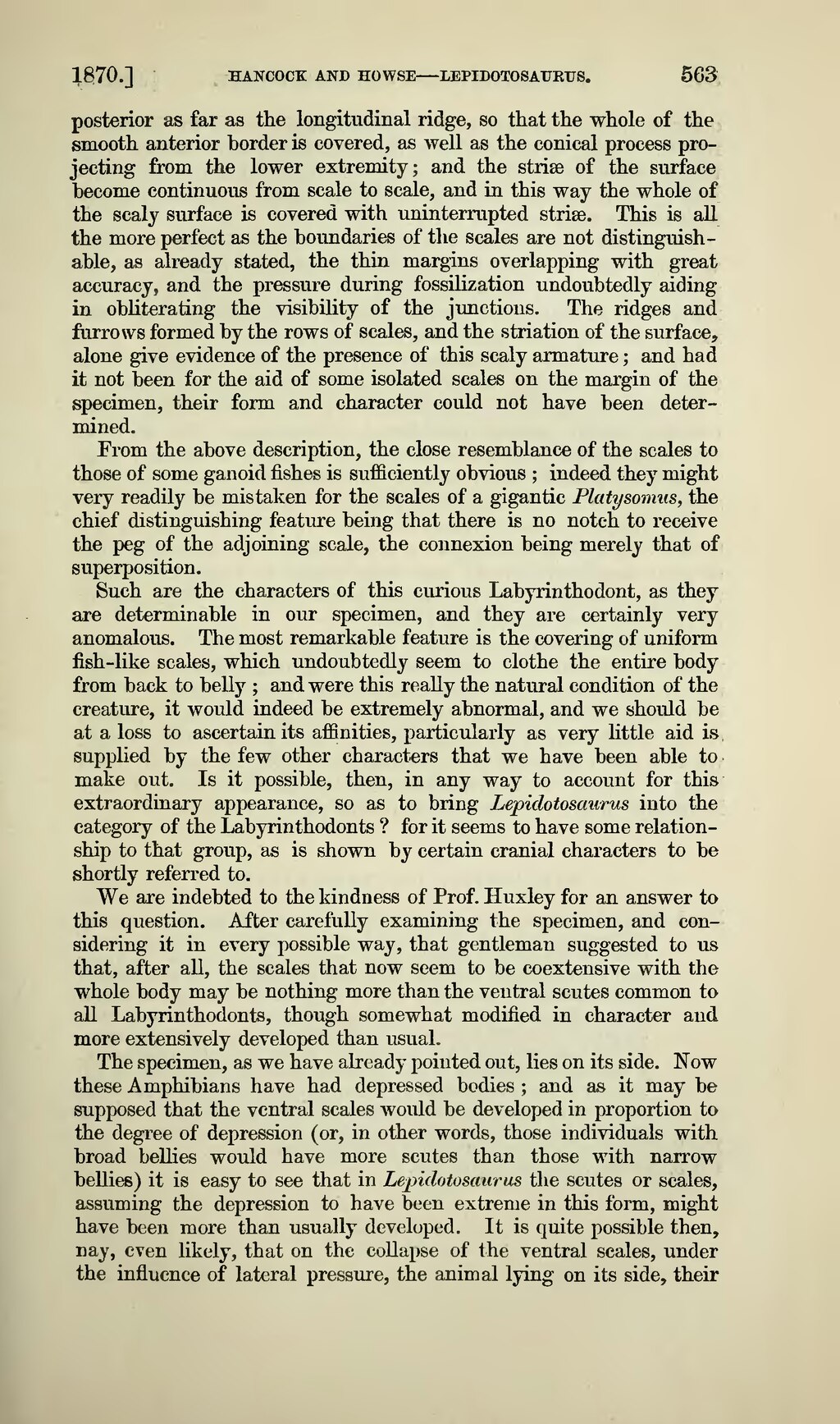posterior as far as the longitudinal ridge, so that the whole of the smooth anterior border is covered, as well as the conical process projecting from the lower extremity; and the striae of the surface become continuous from scale to scale, and in this way the whole of the scaly surface is covered with uninterrupted striae. This is all the more perfect as the boundaries of the scales are not distinguishable, as already stated, the thin margins overlapping with great accuracy, and the pressure during fossilization undoubtedly aiding in obliterating the visibility of the junctions. The ridges and furrows formed by the rows of scales, and the striation of the surface, alone give evidence of the presence of this scaly armature ; and had it not been for the aid of some isolated scales on the margin of the specimen, their form and character could not have been determined.
From the above description, the close resemblance of the scales to those of some ganoid fishes is sufficiently obvious ; indeed they might very readily be mistaken for the scales of a gigantic Platysomus, the chief distinguishing feature being that there is no notch to receive the peg of the adjoining scale, the connexion being merely that of superposition.
Such are the characters of this curious Labyrinthodont, as they are determinable in our specimen, and they are certainly very anomalous. The most remarkable feature is the covering of uniform fish-like scales, which undoubtedly seem to clothe the entire body from back to belly ; and were this really the natural condition of the creature, it would indeed be extremely abnormal, and we should be at a loss to ascertain its affinities, particularly as very little aid is, supplied by the few other characters that we have been able to make out. Is it possible, then, in any way to account for this extraordinary appearance, so as to bring Lepidotosaurus into the category of the Labyrinthodonts ? for it seems to have some relationship to that group, as is shown by certain cranial characters to be shortly referred to.
We are indebted to the kindness of Prof. Huxley for an answer to this question. After carefully examining the specimen, and considering it in every possible way, that gentleman suggested to us that, after all, the scales that now seem to be coextensive with the whole body may be nothing more than the ventral scutes common to all Labyrinthodonts, though somewhat modified in character and more extensively developed than usual.
The specimen, as we have already pointed out, lies on its side. Now these Amphibians have had depressed bodies ; and as it may be supposed that the ventral scales would be developed in proportion to the degree of depression (or, in other words, those individuals with broad bellies would have more scutes than those with narrow bellies) it is easy to see that in Lepidotosaurus the scutes or scales, assuming the depression to have been extreme in this form, might have been more than usually developed. It is quite possible then, nay, even likely, that on the collapse of the ventral scales, under the influence of lateral pressure, the animal lying on its side, their
